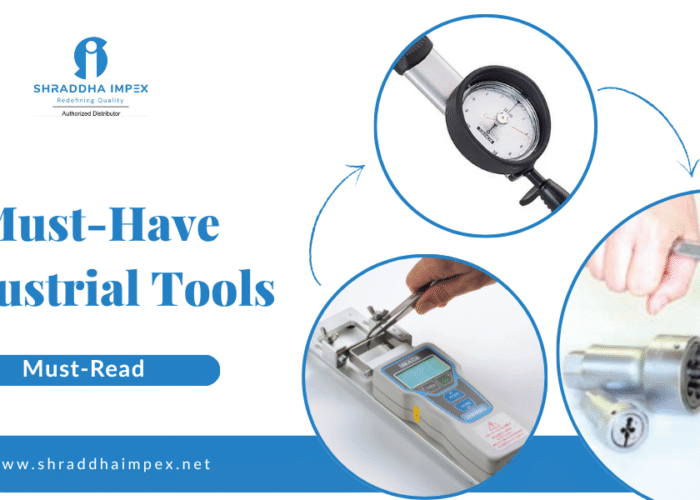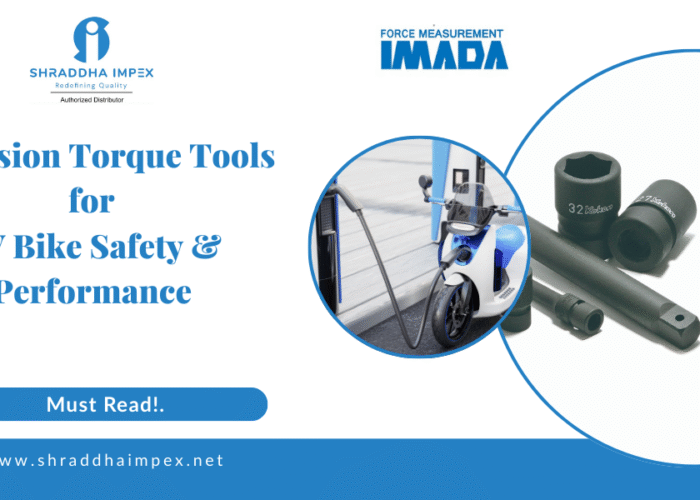Force testing and accurate force measurement are the backbone of many quality checks in the medical industry. Shraddha Impex supplies industrial tools and precision tools that help manufacturers and labs move from guesswork to clear numbers. Instruments like force gauges and motorized test stands, including popular models like the Imada Motorized Test Stand with different attachments, let teams measure push, pull, puncture, and compression forces with confidence.
These measurements matter. Whether you test needle penetration, tablet break strength, or package seal integrity, having reliable force gauges turns subjective judgments into objective data. That data helps you set limits, track trends, satisfy auditors, and ultimately protect patients.
-Why force testing matters in medical applications
Safety, consistency, and compliance
In healthcare and pharma, a single measurement can affect safety, comfort, and regulatory compliance. Needle sharpness significantly impacts patient pain and the success of injections. Tablet hardness influences dissolution and dosage delivery. Packaging seals protect sterility. Accurate force measurement enables these attributes to be measured and reproduced consistently.
From subjective feel to objective data
Many teams rely on feel or visual checks. That can work sometimes, but it is inconsistent. Industrial tools and force testing give repeatable numbers you can trend, average, and defend during audits.
-Key tools Shraddha Impex offers for medical testing
Motorized and benchtop test stands
Motorized test stands control speed, alignment, and travel distance. They are essential when you need repeatability across many samples — for example, tablet hardness or automated blister-peel tests.
Practical tip: Use motorized stands when you compare results across shifts or sites to eliminate operator variability.
Specialized fixtures and grips
One Machine can do many jobs if paired with the right fixtures: puncture tips for needles, compression anvils for tablets, peel hooks for blister packs, and crimp grips for pull tests.
Practical tip: Build a labeled fixture library with photos and a one-line test method to speed setup and avoid mistakes.
Calibration tools and traceable standards
Accurate instruments need regular calibration. Shraddha Impex works with traceable calibration services and standards that support quality systems and audit trails.
Practical tip: Tag each instrument with its next calibration date and keep a digital log. That saves time during audits.
-How these tools are used — practical applications
Needle sharpness (puncture/penetration testing)
Needle sharpness is measured by the force required to penetrate a standard test medium at a controlled speed and angle. Lower and consistent penetration force usually means better perceived sharpness.
Practical steps:
- Set a clear test speed and needle angle.
- Record peak penetration force and note anomalies.
Practical tip: Standardize the test medium batch and store it properly. Variation in the medium often creates more noise than the needles themselves.
Tablet hardness and break strength
Tablet hardness testing measures compressive force until fracture. This data links directly to dissolution and handling robustness.
Practical steps:
- Position the tablet consistently on the anvil.
- Apply compression at a steady rate using a test stand when possible.
- Log peak force and whether the break pattern meets specs.
Practical tip: For early-stage production, chart trends to spot progressive softening or hardening before batches fail.
-Data, software, and trend analysis
Turning raw numbers into useful insight
Modern force gauges capture peak forces, time-series data, and load curves. The value lies in turning those numbers into trends, control charts, and alerts.
Practical tip: Export CSVs and chart the mean and range over time. Even a simple run chart will show drift sooner than isolated spot checks.
-Calibration, validation, and regulatory readiness
Build calibration into daily routines
Traceable calibration certificates and scheduled checks are non-negotiable. Calibrate more often for high-use instruments or critical tests.
Practical tip: Include calibration reminders in your maintenance calendar and require sign-off after any out-of-spec result.
-Choosing the right instrument
Match capacity and resolution
Pick a gauge with capacity comfortably above expected loads and with resolution that reveals the differences you care about.
Practical tip: Aim for a gauge and motorized test stand capacity at least twice the maximum expected force. That preserves accuracy and extends instrument life.
Think modular, not monolithic
Buy a flexible gauge and a set of fixtures rather than separate machines for every test. This saves bench space and cost.
Practical tip: Prioritize the most critical tests first and expand your fixture library as needs grow.
-Training, ergonomics, and safety
Short demos and quick-starts
Operators learn by doing. Short hands-on demos and one-page quick-start sheets reduce mistakes and speed onboarding.
Practical tip: Include photos, key settings, and two do/don’t items on each quick-start sheet.
Safety-first setups
Tests with needles or high compression require guards, overload alarms, and clear SOPs. Ergonomic gauges and guarded stands reduce incidents.
Practical tip: Add one-line safety prompts to each test method to keep the focus on safe operation.
-Return on investment and case examples
Small investment, big upside
A force gauge plus a few fixtures is a modest capital outlay compared to the cost of a recall, failed batch, or patient complaint. Standardized testing reduces rework and improves supplier decisions.
Practical tip: Start with the tests that directly affect safety or regulatory release. Measure the reduction in failures and use that to justify expansion.
Real-world wins
Manufacturers have cut batch failures by standardizing tablet hardness testing. Clinics have improved patient comfort after switching needle suppliers based on penetration data. These wins show how measurement tools can directly improve product performance and patient outcomes.
Practical tip: Keep short before-and-after notes in your quality system to build internal buy-in.
The future of force testing in medical manufacturing
Connected gauges, cloud analytics, and automated alerts will make force testing faster and more predictive. Shraddha Impex supports both classic precision tools and modern, data-ready instruments so teams can improve quality without replacing established processes.
From needles to tablets and packaging, accurate force testing is essential in the medical industry. Shraddha Impex provides force gauges, test stands, fixtures, and calibration support that turn qualitative checks into defendable, repeatable data. Start with the right gauge, standardize your medium and method, and log results centrally. Small, practical steps deliver better safety, smoother audits, and measurable quality improvements.



